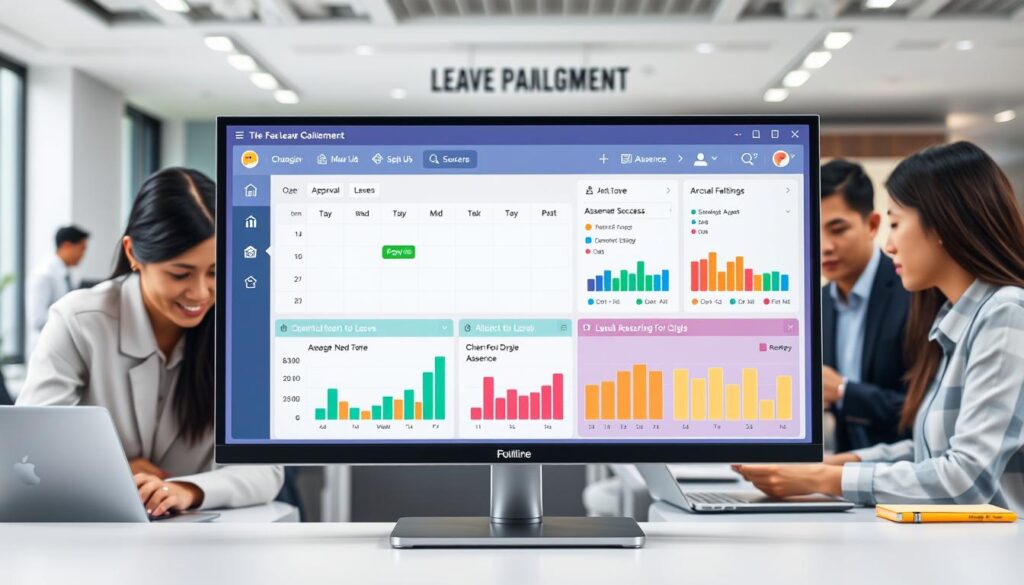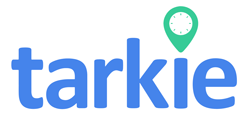Have you ever thought about how much time and resources your company could save with digital leave reporting? Small and medium enterprises (SMEs) in the Philippines are moving towards better workforce management. This shift makes managing absences more efficient.
Manual tracking used to weigh down HR departments and make leave requests complicated. Now, digital systems make these tasks easier. They allow for accurate attendance tracking and let employees check their leave balances easily.
Studies show that automation can save HR workers 20-30% of their time. This means digital systems in leave management boost efficiency and employee happiness. Customizable PTO policies can even raise satisfaction by up to 15%.
The real challenge isn’t whether to use these solutions. It’s how fast your organization can start using them.
Key Takeaways
- Digital systems can significantly reduce administrative burdens on HR teams.
- Employee satisfaction can increase by up to 15% with customizable PTO policies.
- Automation can free up 20-30% of typical HR worker’s time.
- Up to 60% of employees prefer using mobile devices for leave requests.
- Adoption of leave management systems can lead to a 25% decrease in administrative costs.
- Enhanced compliance through digital systems can reduce labor law violations by 30%.
The Importance of Leave and Absence Management in the Workplace
Leave and absence management is key to a workplace’s success. It affects how well the team works and how happy employees are. Companies that want to do well know they need good HR practices for leave.
Small businesses often struggle with old ways like paper forms and emails. These methods can lead to mistakes and waste of resources. This shows why new, better systems are needed.
Many companies, about 60%, find it hard to follow rules because of old leave management. This makes it hard to keep track of who’s off and when. It also means employees might work too much, which lowers their productivity.
Introducing automated leave systems can really help. It can cut down the time to approve leave by up to 50%. Cloud-based solutions can also make employees more engaged, which is good for keeping them happy and on the team.
- Streamlined leave approvals lead to better communication between supervisors and employees, potentially increasing satisfaction by as much as 70%.
- Automated systems reduce paperwork, eliminating about 80% of the admin workload associated with leave requests.
- The integration of leave management with HR platforms can improve overall operational efficiency by 25%.
Digital systems help understand why people are absent. This lets companies make better HR plans. By tackling issues like stress and burnout, employers can make a better work place. Good leave and absence management is about caring for your team’s well-being, not just tracking time off.
Challenges Faced by SMEs in Managing Leave and Absences
Small and medium enterprises (SMEs) in the Philippines face big challenges in managing leave. They often have limited resources and don’t have the advanced tools that bigger companies use. This makes their processes harder to manage, leading to HR struggles.
They often rely on old methods like manual spreadsheets and paper forms. This increases the chance of mistakes happening.
Miscommunication about leave requests can cause problems. It can lead to not enough staff and extra overtime costs. Up to 40% of SMEs face disruptions because of bad leave management, hurting productivity.
A good leave management system can make employees happier. Happy employees are up to 12% more productive, research shows.
Following labor laws is also a big challenge for SMEs. About 50% of them don’t know the leave laws well. Not following these laws can lead to legal trouble, making good leave management even more important.
Using automated leave tracking can help avoid these problems. It can cut down on compliance issues by up to 30%, protecting against fines.
Customizing leave policies in management systems can help follow labor laws better. Digital tools can make leave management much more efficient. Companies using automated systems spend 50% less time on admin tasks.
| Challenge | Impact | Potential Solution |
|---|---|---|
| Lack of advanced tools | Increased human error | Adopt automated management systems |
| Miscommunication on leave requests | Workforce shortages | Implement clear leave policies |
| Compliance difficulties | Legal repercussions | Regular training on labor laws |
| Limited resources for leave management | Increased stress on HR staff | Use cloud-based HR and payroll solutions |

Understanding Digital Systems in Leave Reporting
Digital leave reporting has changed how companies handle employee time off. These systems make tracking leave easier, cutting down on mistakes. They help businesses save time, letting teams focus on important tasks.
Workforce automation brings many benefits. It makes employees happier and more satisfied. About 75% of workers feel they have a better work-life balance with these tools.
These systems also help reduce absences by 20%. They offer real-time updates on who’s available. This cuts down on scheduling problems by 45%.
Keeping up with labor laws gets easier with these systems. They help companies follow rules better than old methods. About 70% of new employees get confused about leave policies. Digital tools make it clearer for them.
Remote and hybrid work is becoming more common. This means the need for good leave management systems is growing. These systems prevent mistakes in payroll and make tracking easier. They protect companies from fines due to errors.
Key Features of Digital Systems for Absence Management
Digital systems bring many benefits to managing absences. They make leave and attendance processes more efficient. These systems also give insights into how employees work and their productivity.
Automated Leave Requests and Approvals
Employees can now request time off online. This cuts down on paperwork and speeds up approvals. Managers get alerts, making it easier to make decisions.
Automation keeps data accurate, reducing errors. This is important since manual systems can have up to 15% error rate. Companies using automated systems see fewer payroll mistakes.
Real-Time Attendance Tracking
Real-time tracking lets HR keep an eye on who’s in and who’s not. Instant alerts help tackle absenteeism quickly. Employees can check their attendance records on apps, boosting engagement.
These systems also support flexible work schedules. This helps meet the needs of today’s work-life balance.
Data Analytics and Reporting
Data analytics in attendance systems offer detailed reports on attendance and absences. These reports help HR make better decisions. Companies using these systems can create reports that help follow labor laws better.
Analytics also help spot how engaged employees are. Offering self-service options can raise satisfaction by 20%.

Benefits of Implementing Digital Systems in Leave Reporting
Switching to digital systems for leave reporting makes a big difference. It boosts HR operations and makes the workplace better. This leads to more productivity and happier employees.
Enhanced Accuracy in Attendance Records
Digital systems make attendance records much more accurate. They cut down on mistakes, keeping data almost perfect. This is key for correct pay and fair hours worked.
Time and Cost Efficiency for HR Teams
Digital leave management saves HR teams a lot of time and money. They can spend more time on important tasks like training and engagement. Leave requests are handled much faster, cutting down processing time to almost nothing.
Improved Employee Accountability
Clear tracking of attendance makes employees more responsible. They feel more connected to their work. This leads to a 20% boost in satisfaction with leave processes.
| Benefit | Impact | Statistical Evidence |
|---|---|---|
| Enhanced Accuracy | Reduces payroll discrepancies | Attendance data accuracy of 99.9% |
| Time Efficiency | Reduces processing time for leave requests | Processing time cut from 5 days to less than 1 day |
| Cost Efficiency | Decreases administrative workload | 50% decrease in administrative costs |
| Employee Accountability | Increases employee satisfaction | 20% increase in satisfaction score |
How Digital Systems Streamline Employee Scheduling
Digital systems are changing how we schedule employees. They make scheduling more efficient and reduce work for managers. These systems help teams work better and make operations smoother.
Integration with Payroll and HR Software
When scheduling software works with payroll and HR, it makes data sharing easy. This link helps avoid mistakes in pay. It also makes following labor laws easier.
Using automated systems can cut down on absences by 30%. HR teams can then focus on more important tasks. They can spend up to 40% less time on routine work.
Optional Self-Service Employee Portals
Self-service portals let employees handle their leave and check their records themselves. This builds trust by 35%. It also helps employees use resources better, improving by 25%.
Mobile features make it easier for field workers to manage their schedules. This boosts their engagement by 20%.
| Feature | Impact |
|---|---|
| Integration with Payroll | 50% reduction in payroll discrepancies |
| Automated Attendance Tracking | 75% reduction in attendance discrepancies |
| Self-Service Employee Portals | 35% increase in leave request transparency |
| Real-Time Staffing Adjustments | 70% faster issue resolution |
| Analytics and Reporting | 25% reduction in absenteeism |
Using digital systems for workforce management improves scheduling. It also makes work more engaging and efficient. As companies adopt these tools, they see better employee satisfaction and work performance.
Success Stories: Digital Systems Transforming Leave Management in the Philippines
Digital systems have changed leave management in the Philippines for the better. Many companies have seen big improvements in their leave management thanks to these systems. Two stories show how these systems worked well in different fields.
Case Study: A Retail Company’s Journey to Automation
A top retail company made its leave management system digital. This move made tracking attendance easier. It also cut down on scheduling problems and boosted employee happiness.
With the new system, everyone could see attendance data in real time. This reduced confusion about leave balances. It built trust and happiness among the team.
Case Study: Optimizing Absenteeism in the Healthcare Sector
A big healthcare provider used a new digital leave request system. This helped keep the right number of staff on duty at all times. It made patient care better and patients happier.
This digital change helped the healthcare team manage absences well. It made sure all patient needs were met quickly.
| Company | Sector | Digital System Features | Impact |
|---|---|---|---|
| Retail Company | Retail | Automated Attendance Tracking | Reduced scheduling conflicts, improved employee morale |
| Healthcare Provider | Healthcare | Digital Leave Request System | Enhanced staffing levels, better patient care |
Choosing the Right Digital System for Your Organization
Choosing the right digital system for leave management can really help an organization track and manage employee absences better. This process involves looking at different software criteria to make sure it fits the business’s needs. By making smart choices, organizations can work more efficiently and make their employees happier.
Criteria for Selecting the Best Software
When looking at leave management software, keep these key points in mind:
- Scalability: Find systems that can grow with your company.
- Integration capabilities: Make sure it works well with your current HR tools for easy data sharing.
- User-friendliness: A system that’s easy to use can make managing leave requests better for employees.
- Real-time reporting: Features that send out updates right away can help managers handle attendance issues quickly.
- Multi-language support: This is important for companies with employees from different countries, making the system more accessible.
Popular Digital Systems for Leave Reporting
There are many good options for leave management software, each meeting different needs:
| Software | Pricing (User/Month) | Key Features |
|---|---|---|
| TeamSense | $3 (Basic) $5 (Pro) $8 (Advanced) |
Absence reporting in 19 languages, real-time notifications, absenteeism tracking |
| Timetastic | Custom pricing | PTO tracking, remaining leave balance notifications |
| Jibble | Free tier available | Biodata tracking, payroll integration |

By carefully looking at these software options, organizations can manage employee leave well. The right choice can lead to less absenteeism, smoother processes, and better productivity overall.
Implementing a Digital System for Leave Reporting
Switching to a digital system for leave reporting needs careful planning. Organizations must take the lead at several stages for a smooth transition. This begins with reviewing current workflows and picking the right features for their needs.
Planning and Preparation Steps
To set up a good digital leave management system, follow these implementation steps:
- Check your current leave tracking for what needs better.
- Set clear goals to boost efficiency and follow rules better.
- Get everyone involved to get their input and support.
- Look for the best digital system that fits your goals.
- Make a plan for when to roll it out, with all steps clear.
Training and Support for Employees
After setting up the system, training employees is key to their confidence and use. Offering ongoing support is also crucial for solving any problems. Here are some tips:
- Have training sessions to teach employees about the new system.
- Make tutorials and FAQs easy to find for help after training.
- Have someone to contact for support questions.
- Ask for feedback to find ways to get better.
Future Trends in Digital Systems and Absence Management
The world of absence management is about to see big changes thanks to digital system evolution. Companies want to work better and make their employees happier. New HR technology will play a big role in changing how we handle leave.
Exploring AI and Machine Learning in HR
Artificial Intelligence and Machine Learning are changing how we deal with attendance data. These technologies offer insights that old methods can’t. They help predict when people might not show up for work.
Companies using AI for absence prediction can get it right up to 85% of the time. This means they can get ready for when people are out and handle it better.
The Rise of Mobile Accessibility in Leave Management
More people are working on their phones, so digital systems are becoming more mobile-friendly. Employees want to manage their leave and attendance on their smartphones. This makes things easier and gets everyone more involved.
By making things mobile, companies can create a culture where everyone talks openly. Research shows that 80% of employees feel more at ease asking for leave when they can talk directly to their bosses. This shows how good tech can make a workplace better.

Addressing Concerns: Data Privacy and Security
Digital systems are changing how we manage workplaces. Businesses must focus on keeping employee data safe. This isn’t just about following rules; it builds trust and boosts performance.
Best Practices for Protecting Employee Information
Companies need a solid plan to keep employee data safe. Here are some important steps:
- Encryption: Encrypting data in transit and at rest helps to protect against unauthorized access.
- Access Controls: Implementing strict access controls limits exposure to sensitive information only to authorized personnel.
- Regular Audits: Conducting security audits regularly ensures that measures remain effective against evolving cyber threats.
- Strong Password Policies: Encouraging robust password practices among employees reduces vulnerabilities.
- Multi-Factor Authentication: Utilizing multi-factor authentication can significantly lower the risk of data breaches.
Regulatory Compliance in Digital Reporting Systems
Following the law is key for managing employee data. Not doing so can lead to big fines. Companies might face:
- Legal consequences, including lawsuits filed by employees due to negligence.
- Penalties averaging between $50,000 and $5 million, depending on the severity of the data breach.
- Increased audits and potential restrictions on business operations due to non-compliance.
- A significant decrease in organizational reputation, leading to potential financial losses, including a 20% decrease in share value post-breach.
Strong data privacy measures protect companies from big losses. They also create a safe work place. Studies show that 60% of employees trust their company less when their data is at risk. By focusing on security, companies can keep their employees safe and maintain trust.
Conclusion
Integrating digital systems into leave and absence reporting is more than a trend. It’s key for managing absences well and making workplaces more efficient. Small and medium-sized enterprises (SMEs) in the Philippines can greatly improve how they handle employee attendance by switching to automated systems.
This change makes operations smoother and boosts employee happiness, involvement, and productivity. It’s a big step towards a better work environment.
Time theft and absenteeism can cost businesses a lot of money. That’s why it’s important to use smart systems to manage leave. Modern leave management tools cut down on mistakes, make approval processes easier, and provide valuable insights for making better choices.
By going digital, businesses can work more efficiently and build a stronger future. It’s a smart move that pays off in the long run.
